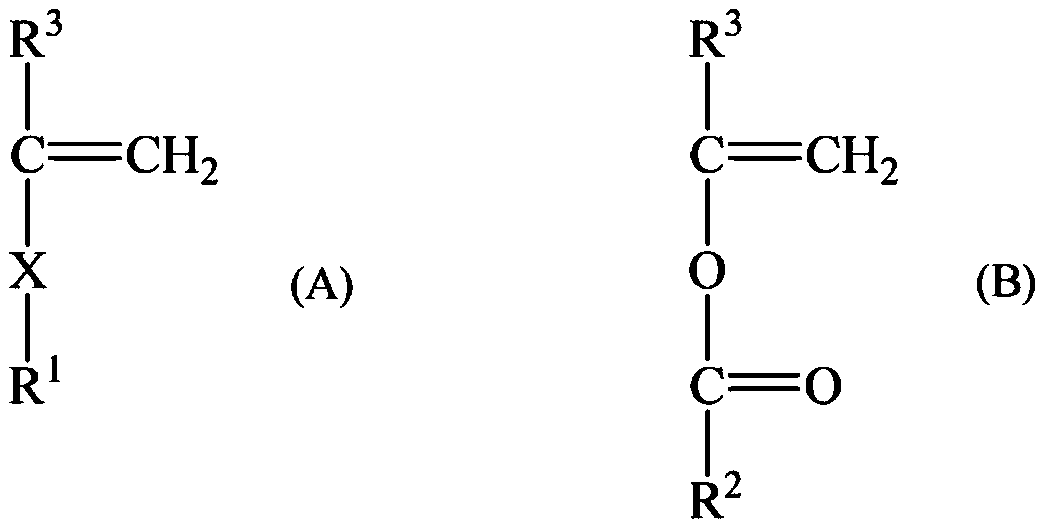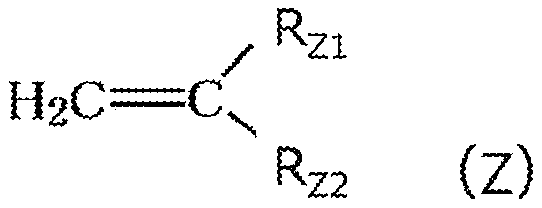Magnetic toner and method for manufacturing magnetic toner
A toner, magnetic technology, applied in the field of magnetic toner manufacturing
- Summary
- Abstract
- Description
- Claims
- Application Information
AI Technical Summary
Problems solved by technology
Method used
Image
Examples
specific example
[0197] Specific examples include:
[0198] Such as low molecular weight polyethylene, low molecular weight polypropylene, polyolefin copolymer, polyolefin wax, microcrystalline wax, paraffin wax and Fischer-Tropsch wax and other aliphatic hydrocarbon waxes; such as polyethylene oxide wax and other aliphatic hydrocarbon waxes oxides of these; block copolymers of these; vegetable waxes such as candelilla wax, carnauba wax, Japanese wax, and jojoba wax; animal waxes such as beeswax, lanolin, and spermaceti; waxes such as ozokerite ( ozokerite), ceresin, and petrolatum; waxes mainly composed of aliphatic esters, such as montanate wax and castor wax; and partially or fully deoxygenated aliphatic esters, such as deoxygenated carnauba wax. ester.
[0199] The content of the wax in the toner particles is preferably 1.0% by mass to 30.0% by mass, or more preferably 2.0% by mass to 25.0% by mass.
[0200] The toner particles may also contain a charge control agent to stabilize chargea...
Embodiment
[0357] The present invention will be described in detail below using Examples and Comparative Examples, but the present invention is not limited thereto. Parts in the following recipes are by mass unless otherwise stated.
[0358] Preparation of monomers with carbamate groups
[0359] 50.0 parts of methanol were put into the reactor, and then, 5.0 parts of Karenz MOI [2-isocyanate ethyl methacrylate] (Showa Denko) were added dropwise at 40° C. with stirring. After the dropwise addition was completed, it was stirred for 2 hours while maintaining the temperature at 40°C. Unreacted methanol was then removed in an evaporator, thereby preparing a monomer having a carbamate group.
[0360] Preparation of monomers with urea groups
[0361] 50.0 parts of dibutylamine were put into the reactor, and then, 5.0 parts of KarenzMOI [2-isocyanate ethyl methacrylate] were added dropwise at room temperature with stirring. After the dropwise addition was complete, it was stirred for 2 h...
manufacture example
[0363] The following materials were added to a reactor equipped with a reflux condenser, a stirrer, a thermometer, and a nitrogen introduction tube under a nitrogen atmosphere.
[0364]
[0365] The reactor contents were stirred at 200 rpm, heated to 70° C. and polymerized for 12 hours, thereby obtaining a solution of the polymer of the monomer composition dissolved in toluene.
[0366] Next, the solution was cooled to 25° C., and added to 1,000.0 parts of methanol with stirring to precipitate methanol-insoluble components.
[0367] The resulting methanol-insoluble component was filtered off, washed with methanol, and vacuum-dried at 40° C. for 24 hours, thereby obtaining Polymer A1. Polymer A1 had a weight average molecular weight of 20,100, an acid value of 0.0 mgKOH / g, and a melting point of 62°C.
[0368] NMR analysis of this polymer A1 showed that it contained 28.9 mol % of monomer units derived from behenyl acrylate, 53.8 mol % of monomer units derived from methacryl...
PUM
| Property | Measurement | Unit |
|---|---|---|
| oil absorption value | aaaaa | aaaaa |
| particle diameter | aaaaa | aaaaa |
| specific surface area | aaaaa | aaaaa |
Abstract
Description
Claims
Application Information
 Login to View More
Login to View More - R&D Engineer
- R&D Manager
- IP Professional
- Industry Leading Data Capabilities
- Powerful AI technology
- Patent DNA Extraction
Browse by: Latest US Patents, China's latest patents, Technical Efficacy Thesaurus, Application Domain, Technology Topic, Popular Technical Reports.
© 2024 PatSnap. All rights reserved.Legal|Privacy policy|Modern Slavery Act Transparency Statement|Sitemap|About US| Contact US: help@patsnap.com










